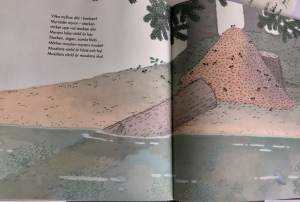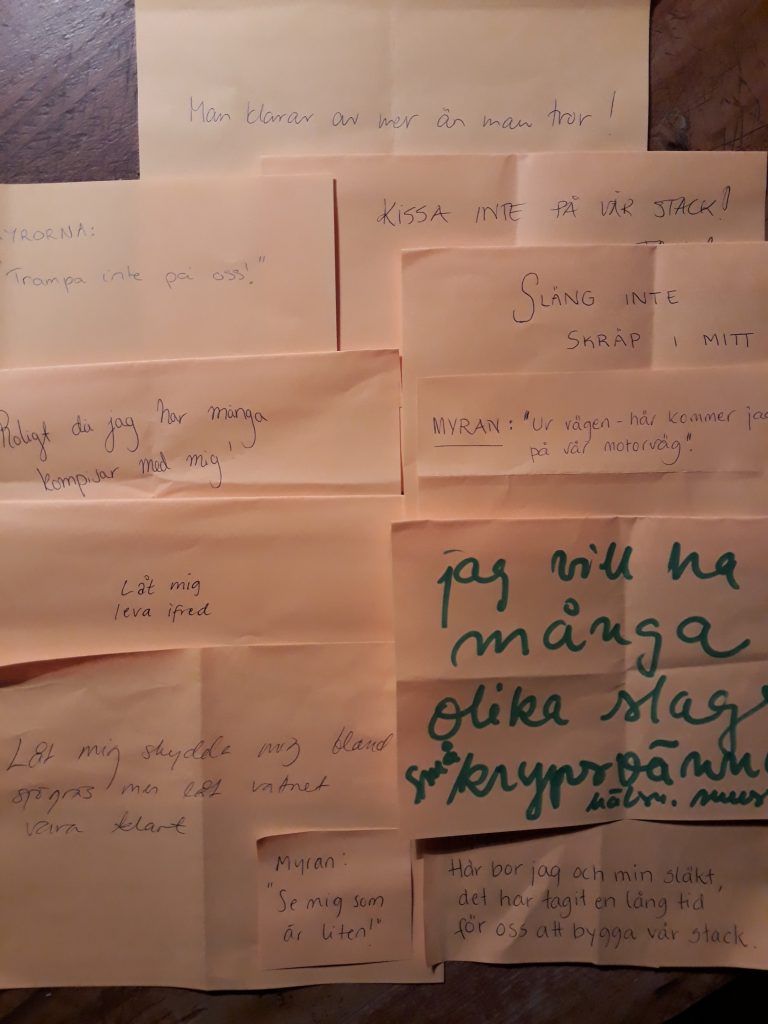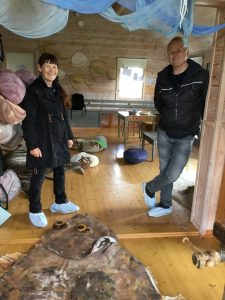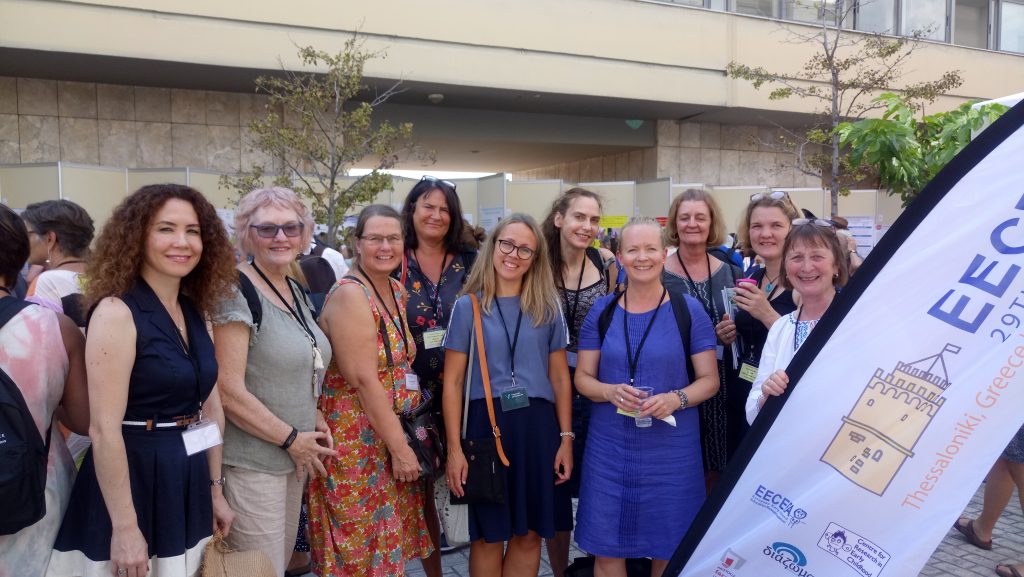Hur gör man småbarnspedagogiken mera hållbar? Det här var en av kärnfrågorna när projekt SUSTE tillsammans med Regionförvaltningsverket den 16 september ordnade kick off för fortbildningen HÅLLBARHET INOM SMÅBARNSPEDAGOGIK som pågår under hösten 2019. Fortbildningen arrangeras för personal på daghem och förskolor och består totalt av tre moduler som på olika sätt behandlar multimodal storytelling som ett verktyg för arbete med hållbarhetsfrågor. En grundtanke är att använda sig av berättande i olika modaliteter för att närma sig hållbarhetsfrågorna och den oro som miljö- och klimatkrisen väcker hos både barn och vuxna. Till det första tillfället kom ett tiotal deltagare, främst från huvudstadsregionen men också från Åboland.
Från SUSTES sida medverkade Hannah Kaihovirta, Maj Åberg-Hildén och Ann-Christin Furu som utbildare i Modul 1. Under dagen fick deltagarna själva uppleva och uttrycka multimodalitet och multilitteracitet i form av texter, bilder, musik och skapande. Efter en kort inledning av Hannah och Maj byggdes lärprocessen upp av flera på varandra följande element med utgångspunkt i ett av uppslagen i Olof Landströms och Lotta Olssons poetiska verk MITT BLAND STJÄRNOR (Lilla Piratförlaget, 2016).
Ungefär såhär framskred processen:
Vad ser du i bilden? Den första övningen bestod i att läsa av bilden sådan som den är – rakt upp och ner, med texten övertäckt. Som stöd i den här fasen fungerade följande frågor: Vad finns i förgrund, mitt och bakgrund? Vilka former och färger? Hurudana perspektiv och proportioner? Bara beskriv det du ser med ett eget verbalt och visuellt uttryck: kanske kan du skriva fram en egen uppräkning, text, eller liten dikt?

Vad hör du i dikten? Nästa moment blev att lyssna till en uppläsning av den text som författaren skrivit i anslutning till bilden. Hurudana ord finns här? Vilka ljud? Vilken är relationen mellan bild och text? Vilka tankar och känslor väcker dikten i dig?
Vad vill du skapa utgående från bilden? Nu var det dags att gå vidare med hjälp av grillpinnar, gummisnoddar och flätade snoddar. Kanske skapa ett eget ”rum” med koppling till myror och musslor. Kanske skapa egna småkryp? Maj gav handledning i olika tekniker för att göra snoddar (flätade, tvinnade, virkade och stickade) medan Hannah medverkade i byggandet av tredimensionella konstruktioner.


En av intentionerna med detta moment var att lära känna de olika materialen och teknikerna; deras struktur, textur och potential. Att lyssna in de olika möjligheter materialet och tekniken kan erbjuda i fråga om skapande. Och – självklart – att överlämna sig åt den skapande processen.
Eftermiddagen ägnades till en början åt ett praktiskt exempel på hållbarhetsarbete inom småbarnspedagogiken. Aija Mäkinen från Pargas stad presenterade GÄDDAN OCH GÄNGET – ett tioårigt projekt med fokus på ett brett spektrum av hållbarhetsfrågor inom småbarnspedagogiken. En konklusion blev att långsiktighet och gott samarbete mellan olika aktörer är en förutsättning för att arbetet ska bli verkningsfullt
Småningom blev det dags för deltagarna att återgå till processen med multimodal storytelling i form av en skrivuppgift och avslutande reflektion och diskussion. Vad kan myror och musslor ha på hjärtat? Var och en fick gå i roll och skriva korta hälsningar från de olika småkrypen till oss människor.

Här handlade det om att byta perspektiv, att odla sin empati och forma ett uttryck för en annan levande varelses situation.
Hur gjorde vi? Hur tänkte vi? Hur talade materialen till oss? Deltagarna reflekterade och diskuterade kring de skapelser de gjort och sina intryck av varandras skapelser.

Här gjordes kopplingar till de öppna materialens potential i meningsskapande processer, till möjligheten att använda det man skapat på ett mångsidigt sätt och till att återbruka material på ett kreativt sätt. Och tanken om att allt detta kan vara element i en genomtänkt hållbarhetspedagogik för de yngsta barnen.
Den första fortbildningsdagen avrundades av Ann-Christin genom en teoretisk överblick som behandlade ett urval av grundläggande begrepp och perspektiv på vad hållbarhet kan vara i en småbarnspedagogisk kontext. Deltagarna fick också instruktioner för den portfolio de kommer att göra under fortbildningen. Nu är vi igång och ser med intresse fram emot kommande två moduler!




